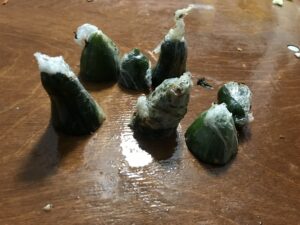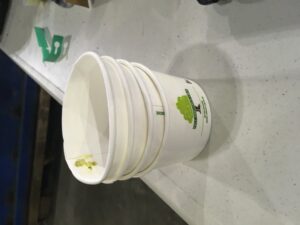My formal internship with eatable is ending, but I am lucky enough to be able to continue working until BCEP starts up again.
Continuing to work means getting to have more of a seat at the table in business development conversations as well as accompanying founders Cam Pascual and Mia Zavalij on waste audits.
These audits are one of the main ways that eatable contributes value to our clients. The goal of these is to
- Challenge existing assumptions about waste streams
- Provide recommendations to meet sustainability goals
- Generate a basis for a thorough education program

Challenging assumptions is perhaps the most difficult and most crucial part of the process. It should come as no surprise that any of us can fall victim to becoming entrenched in our own ways. We have expectations about how something is run, or how big a problem is. In my business, this can manifest as a chef who can confidently share what day of the week the kitchen produces the most waste, what hours are most busy during the day, and what food items always get thrown away.
Testing these assumptions can be painful but rewarding. During the audit we conduct interviews where we can ask staff what they see as problem areas, and what they would like to see targeted for review. This allows us to present a picture of waste in a dining facility that is removed from any individual, and we hope the effort of asking can plant the seeds of self reflection in our interviewees.
Regardless, we are sure to present our results and provide recommendations to clients based on their stated goals. For example: one client had a set of “2020” goals which included a target of zero waste. We first worked to define what that meant—which is no small feat on its own. After the audit we compiled our results and have begun to assess what steps need to be taken to take a typical waste day (the waste we sorted through) down to zero waste.

Without fail, a staple recommendation is to invest effort in education. Diners and kitchen staff both fall into casual patterns and sometimes mis-sort their recycling. If someone is in a hurry to get to a meeting, maybe they didn’t have the extra time to walk to the nearest recycling bin which is at the other exit. Our goal is rather to look at chronic problems—what items are routinely missorted. A classic example: the coffee cup (including the hot sleeve and poly-polystyrene lid).
The practice of auditing leads to exercising a multitude of communication skills worked on at BCEP, as wells as processing a fair share of technical information.
During the interview portion of an audit, we might interact with: housekeeping staff, kitchen workers, dining management staff, college students, diners in a professional setting, executives, sustainability professionals, and more. These general categories aside, we experience a wide variety in expertise person-to-person. Tailoring our questions and topics to each person requires adjusting the amount of “shop talk” we rely on and technical information with discuss. Even when the technicality of our language matches the interviewee we are with, there can be challenges navigating power dynamics.
Kitchen associates tend to see us as representatives from corporate, so when we ask about waste-cutting measures rolled out at the corporate level, we must take those assumptions into account when recording responses. It can be off-putting to students to have two people in suits try to strike up a conversation with them as they’re on their way to class. These issues are not insurmountable, but they are challenging.
Fortunately, they are not surprising. Practicing relaying difficult information at BCEP has allowed me to feel confident speaking to such a wide audience during audits. Navigating power dynamics were always front-and-center in policy courses with Monique. These experiences have allowed me to feel confident quickly and jump right into what would otherwise be very uncomfortable or frustrating situations.
